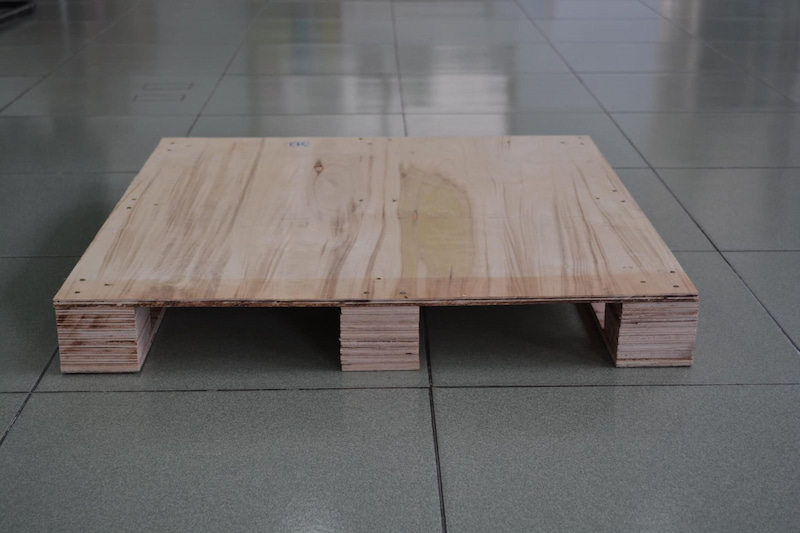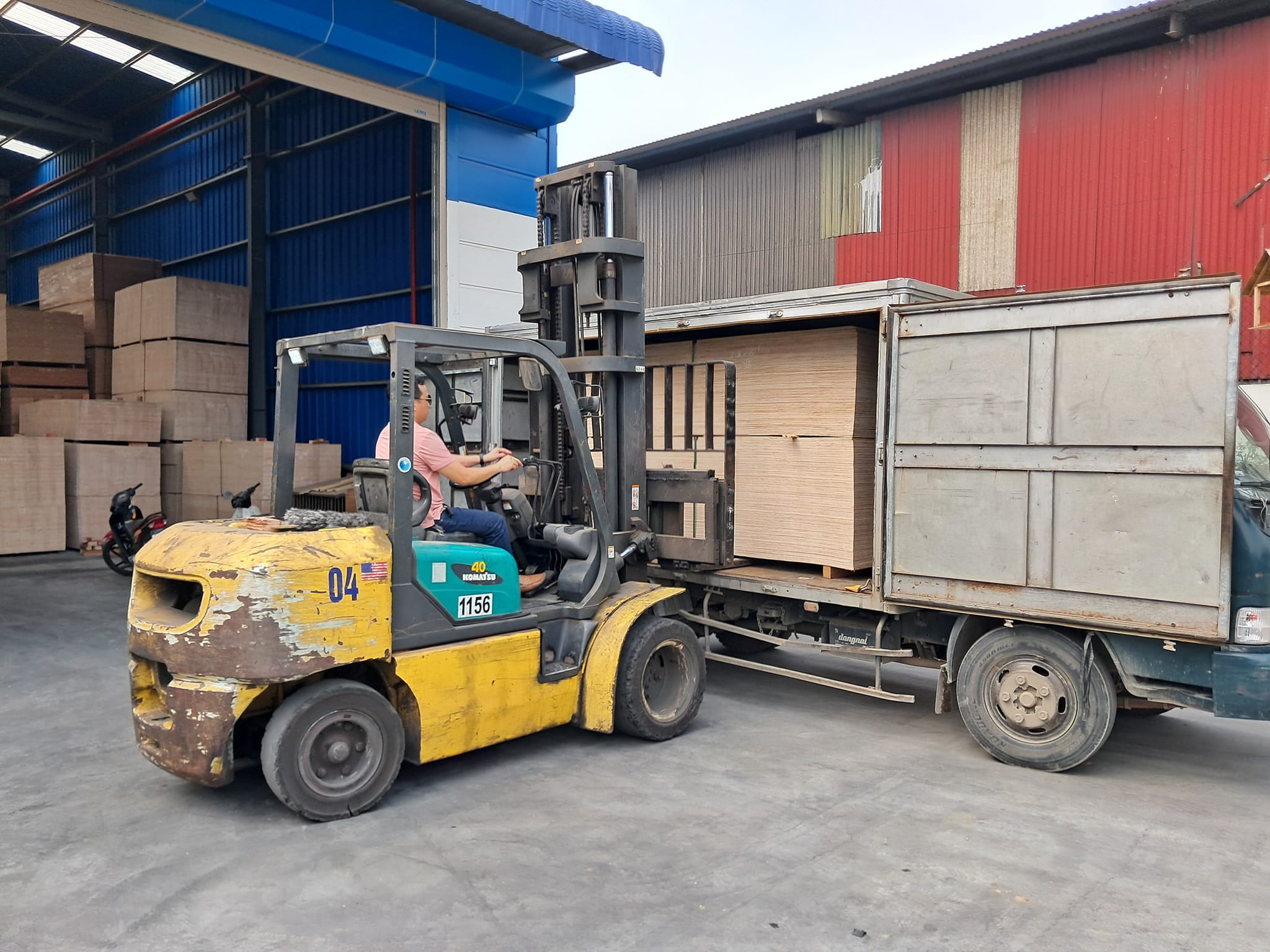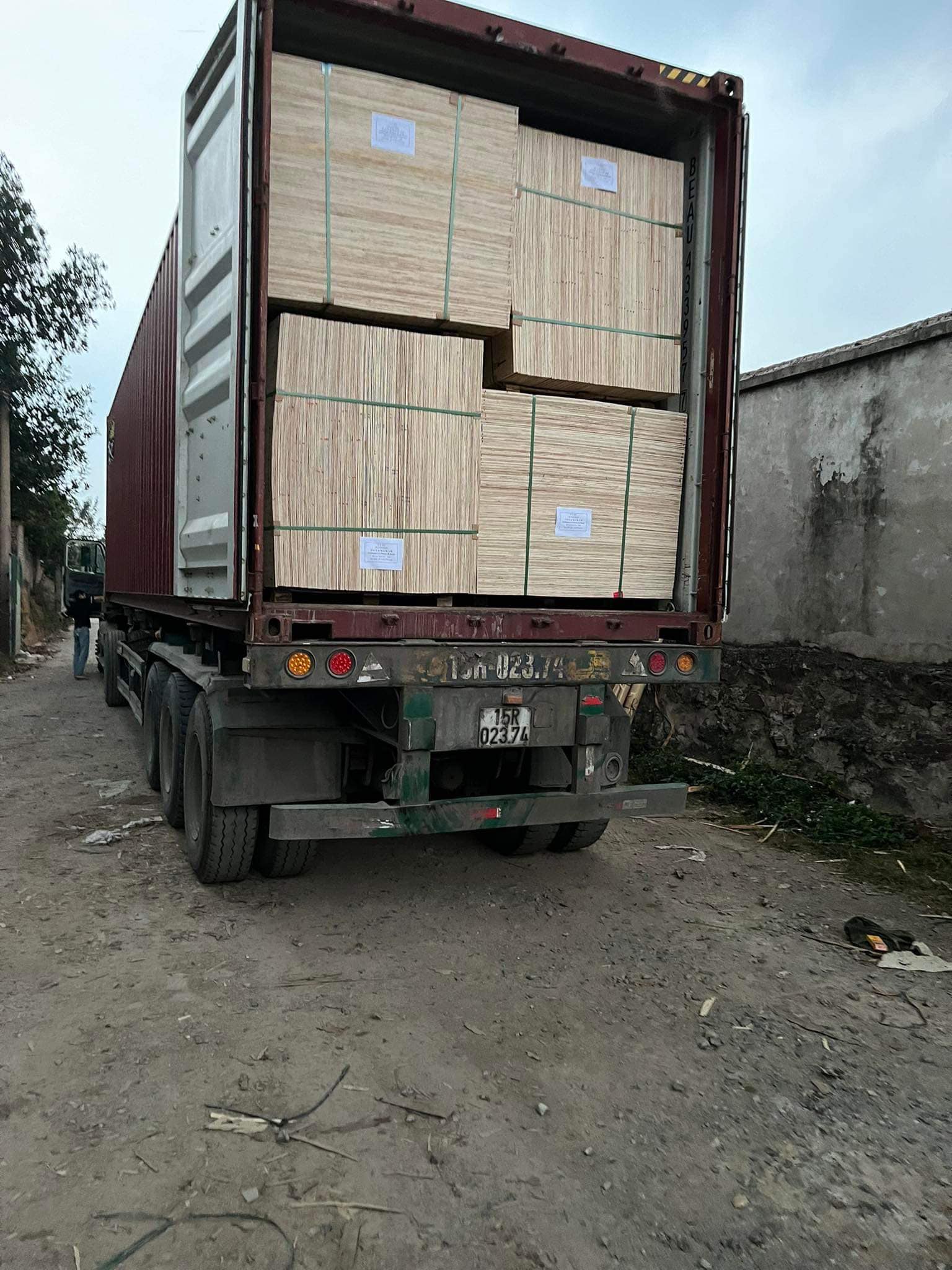Venue Providing Reputable And Quality LVL Plywood In Vietnam
Plywood stands out with the advantages of good strength and makes it easy to manufacture a variety of products for many different fields. This characteristic depends largely on the layered structure, each type of board structure will be suitable for specific applications.Let's join Wood Pallet to know details about LVL Plywood through the article below
What Is Lvl Plywood?
"LVL plywood" is a bit of a redundancy because LVL (Laminated Veneer Lumber) is already a type of engineered wood product that doesn't typically come in a "plywood" format. However, it's possible that the term "LVL plywood" is used colloquially to refer to plywood made with LVL as the core material or with LVL veneers.
>>>See More: Wooden Pallets For Export To The Europe? What Are The Requirements For Pallets In Europe?
Characteristics Of LVL Plywood
-
Strength: LVL plywood is engineered to be strong and durable, making it suitable for structural applications where high load-bearing capacity is required. It often has higher strength properties compared to traditional solid wood or other engineered wood products.
-
Uniformity: LVL plywood is manufactured with uniform properties and dimensions, ensuring consistency in strength, stiffness, and other mechanical properties across the panel. This uniformity allows for predictable performance in structural and manufacturing applications.
-
Dimensional Stability: LVL plywood exhibits excellent dimensional stability, meaning it resists warping, twisting, and shrinking when exposed to changes in moisture or temperature. This property makes it suitable for applications where stability and precision are critical, such as flooring and concrete formwork.
-
Versatility: LVL plywood is versatile and can be customized to meet specific project requirements. It can be produced in various thicknesses, sizes, and grades to suit different applications, from structural framing to furniture manufacturing.
-
Moisture Resistance: Depending on the adhesive used during manufacturing and any additional treatments applied, LVL plywood can offer good resistance to moisture, making it suitable for use in humid or outdoor environments.
-
Workability: Despite its high strength, LVL plywood is relatively easy to work with using standard woodworking tools and techniques. It can be cut, drilled, glued, and fastened like traditional wood, allowing for flexibility in fabrication and installation.
-
Environmental Sustainability: LVL plywood is often made from fast-growing plantation species or sustainably managed forests, making it an environmentally friendly option compared to solid wood products. Additionally, the manufacturing process minimizes waste and maximizes the use of raw materials.
-
Fire Resistance: Some types of LVL plywood are treated with fire-retardant chemicals to improve their fire resistance properties, making them suitable for use in fire-rated assemblies and applications where fire safety is a concern.
-
Cost-Effectiveness: While LVL plywood may have a higher upfront cost compared to traditional lumber or plywood, its superior strength and durability often result in long-term cost savings by reducing material usage, maintenance, and replacement costs.
-
Aesthetic Appeal: Depending on the application, LVL plywood can be finished with various surface treatments to enhance its appearance. It can be stained, painted, or veneered to achieve desired aesthetics in furniture, architectural, and interior design projects.
Structure Of LVL Homodirectional Plywood
-
Veneer Layers: Thin wood veneers, usually less than 3 millimeters thick, are the primary building blocks of LVL. These veneers are typically sourced from hardwood or softwood species. In homodirectional plywood, the veneer layers are oriented in the same direction, meaning all the grain directions run parallel to each other. This uniform orientation contributes to the material's strength and stability.
-
Adhesive: High-strength adhesive is used to bond the veneer layers together. Common adhesives include phenol-formaldehyde (PF) and melamine-urea-formaldehyde (MUF) resins, which provide excellent bonding strength and moisture resistance.
-
Hot Pressing: During the manufacturing process, the veneer layers are assembled into a stack and pressed together under high temperature and pressure. This process activates the adhesive, causing it to cure and bond the veneers into a solid, homogeneous panel.
-
Optional Surface Treatment: Depending on the intended application, homodirectional plywood may undergo additional treatments such as sanding, cutting, or coating to achieve the desired surface finish and dimensional accuracy.
LVL Plywood Production Process
The production process of Laminated Veneer Lumber (LVL) plywood involves several steps to create a strong and durable engineered wood product. Here's an overview of the typical production process:
-
Veneer Preparation: The process begins with the preparation of wood veneers. Logs are peeled into thin sheets or "veneers" using rotary or slicing methods. These veneers are sorted based on quality and thickness, ensuring uniformity in the final product.
-
Adhesive Application: High-strength adhesive, such as phenol-formaldehyde (PF) or melamine-urea-formaldehyde (MUF) resin, is applied to the surface of the veneers. The adhesive helps bond the veneers together and provides structural integrity to the final product.
-
Veneer Layup: The adhesive-coated veneers are then assembled into a stack or "billets" with their grains oriented in the same direction. Depending on the desired thickness and properties of the LVL, multiple layers of veneers may be stacked together.
-
Hot Pressing: The veneer stack undergoes a hot pressing process, where it is subjected to high temperature and pressure. The heat and pressure activate the adhesive, causing it to cure and bond the veneers into a solid panel.
-
Cooling and Trimming: After the pressing process, the LVL panels are cooled and allowed to set. Excess material may be trimmed from the edges of the panels to achieve the desired dimensions and smooth surfaces.
-
Grading and Finishing: The finished LVL panels are inspected and graded based on quality criteria such as strength, appearance, and dimensional accuracy. Depending on the intended application, the LVL panels may undergo additional finishing processes such as sanding or coating to improve surface quality and appearance.
-
Packaging and Distribution: The final LVL plywood panels are packaged and prepared for distribution to customers. They may be shipped to construction sites, manufacturers, or distributors for use in various applications such as structural framing, flooring, or furniture production.
LVL Plywood Application
Laminated Veneer Lumber (LVL) plywood finds numerous applications across various industries due to its strength, durability, and versatility. Here are some common applications of LVL plywood:
-
Structural Framing: LVL plywood is widely used in residential and commercial construction for structural framing elements such as beams, headers, and columns. Its high strength-to-weight ratio allows for longer spans and reduced material usage compared to traditional solid wood.
-
Flooring Systems: LVL plywood panels are used as subflooring and underlayment in flooring systems. Their dimensional stability and resistance to warping make them suitable for supporting finished flooring materials such as hardwood, laminate, or tile.
-
Roofing: LVL plywood is utilized in roof framing applications to provide support for roofing materials and to resist loads such as wind and snow. It can be used for rafters, trusses, and roof decking.
-
Concrete Formwork: LVL plywood panels are commonly used as formwork for casting concrete structures such as walls, slabs, and columns. Their smooth surfaces and high strength make them ideal for creating precise and durable formwork systems.
-
Transportation Infrastructure: LVL plywood is used in the construction of bridges, railway sleepers, and other transportation infrastructure components due to its strength, durability, and resistance to environmental factors.
-
Furniture Manufacturing: LVL plywood is used in the production of furniture such as tables, chairs, cabinets, and shelving. Its uniform strength and stability allow for the creation of durable and long-lasting furniture pieces.
-
Packaging and Crating: LVL plywood is used to manufacture crates, pallets, and packaging materials for shipping and transportation purposes. Its strength and rigidity help protect goods during transit.
-
Industrial Applications: LVL plywood is utilized in various industrial applications such as mezzanine floors, storage racks, and material handling equipment due to its load-bearing capacity and durability.
-
Architectural Design: LVL plywood is increasingly being used in architectural applications for its aesthetic appeal and structural capabilities. It can be used for decorative wall panels, ceilings, and other interior and exterior architectural elements.
Where To Buy LVL Plywood Quality Reputation?
During its operation and development, Woodpallet is honored to cooperate with many large and small customers at home and abroad. We are proud to offer many plywood models that have conquered international markets such as Australia, the US, Malaysia, Singapore, the Middle East, Japan... Owning a domestic processing factory, licensed plantation forest source and warehouse. For large goods, Sancopack LVL Plywood is ready to serve all customers' requests.
At the same time, we always uphold health safety criteria for users and workers during the production process. Therefore, for customers to feel secure in choosing LVL plywood in particular and plywood in general at Woodpallet, we ensure that the products meet full international certification on:
-
CARB P2 formaldehyde emission standard
-
FSC plantation wood certification
-
The plywood production process meets ISO standards
-
Certificate of E0 concentration glue
Unidirectional wooden boards at Woodpallet are currently manufactured to finished products with dimensions of 1220 x 2440mm, thickness ranging from 5.2 - 25mm, covered with many types of high quality surfaces: natural veneer, artificial veneer, melamine , film. In addition, you can order wooden boards in the same direction in certain quantities for more diverse requirements in terms of size and surface.









main.comment_read_more